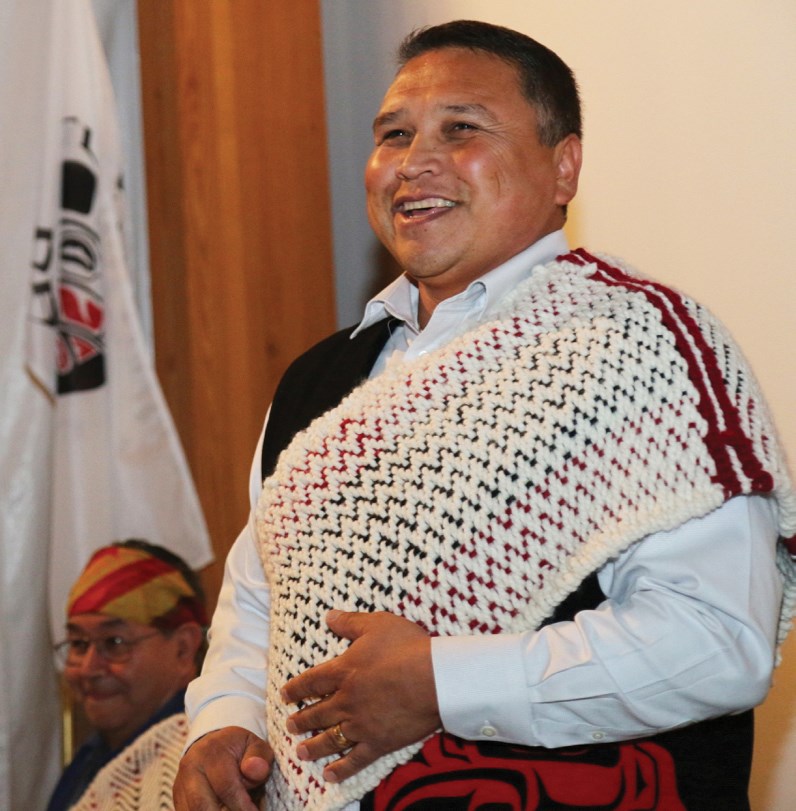Tla’amin Nation celebrated the ushering in of a new era of self-government and self-reliance one minute after midnight on Tuesday, April 5.
Ash from a bonfire fell like snow on a crowd of about 100 people outside the nation’s government house. Everyone present was given a page from the Indian Act to place on the fire in a symbolic gesture of freedom.
“This is a day of triumph for all Tla’amin people,” stated hegus Clint Williams, formerly known as chief. Hegus is the Tla’amin word for leadership.
“I’m proud of my community for choosing a path of change, that while difficult at times, provides us with a new beginning as a self-governing nation free of the Indian Act,” Williams said.
The crowd gathered for singing, dancing and drumming. Later, at an early morning legislative session, Tla’amin’s lawmakers passed provisions for the nation’s self-government, land and capital transfers.
Tla’amin’s chief treaty negotiator Roy Francis said the buildup to the event has been a mix of emotions during the past few days.
“There’s been sadness for members of our community who are no longer with us,” said Francis. “Happiness for our young people, whose future we know is going to be different, and excitement for the community that was able to witness the event with us.”
Tla’amin Nation has approximately 1,100 members, 60 per cent of whom live in the Tla’amin community north of Powell River. Its traditional territory covers about 609,000 hectares.
“The Tla’amin treaty and associated agreements present Tla’amin Nation with modern governance tools, coupled with funds, to generate increased economic vitality,” a federal government backgrounder said. “It also makes the nation an equal partner in government-to-government relationships with Canada and British Columbia.”
Under the treaty, Tla’amin Nation owns and has law-making authority over approximately 8,323 hectares of land, comprised of 6,405 hectares of former provincial Crown land and 1,917 hectares of former Indian Reserves, as well as several small parcels within the territory.
An additional 1,212 hectares of Crown land may become Tla’amin Lands if acquired by the nation in accordance with terms in the treaty.
The Tla’amin treaty provides for a capital transfer of approximately $33.9 million paid over 10 years, less the outstanding negotiating loan; an economic development fund of about $7.9 million; a fishing vessel fund of $285,585; and about $731,895 per year for 50 years through resource revenue sharing arrangements.
Tla’amin Nation also receives funding through a Fiscal Financing Agreement, renewable every five years, to support Tla’amin government operations, implementation of the final agreement and for the provision of programs and services to the Tla’amin people. This funding includes: ongoing federal funding of approximately $9 million per year for the first five years; ongoing provincial funding of approximately $446,000 per year for the first five years; and one-time federal funding of approximately $5 million.
Also under the final agreement, Tla’amin Nation has concurrent direct tax authority over its citizens within its lands, and B.C. and Tla’amin Nation have entered into a Real Property Taxation Co-ordination Agreement that enables Tla’amin Nation to become the property tax authority for all residents on Tla’amin Lands.
– With files from Coast Reporter



